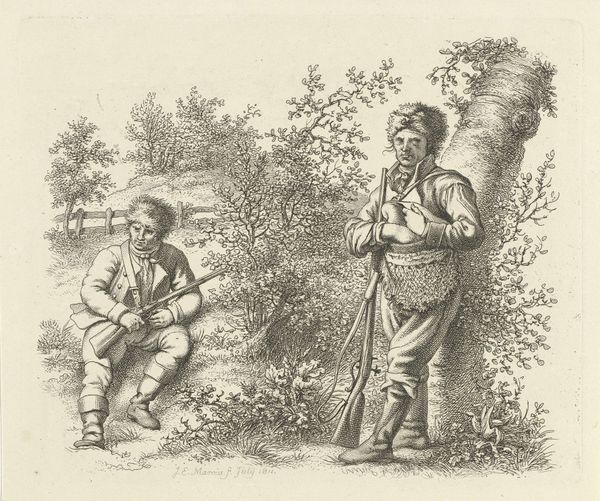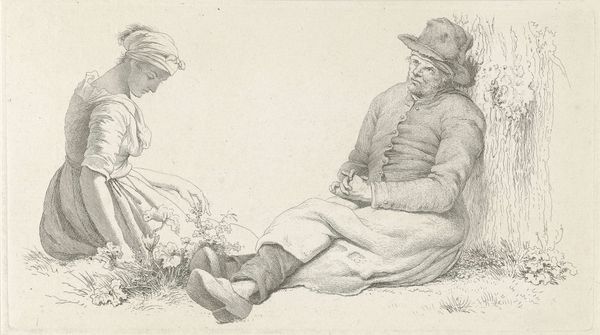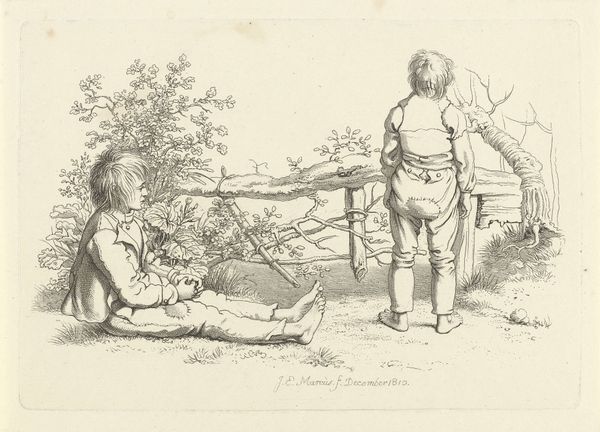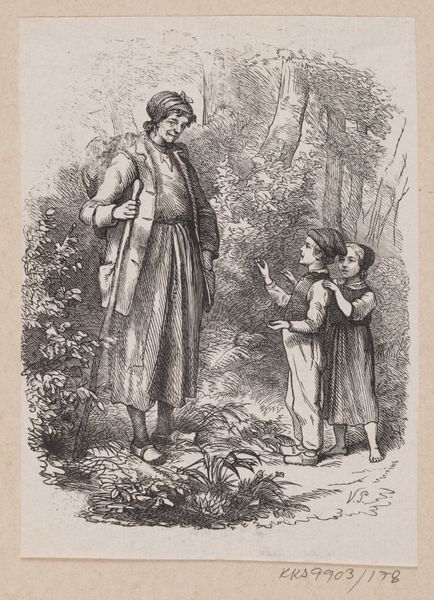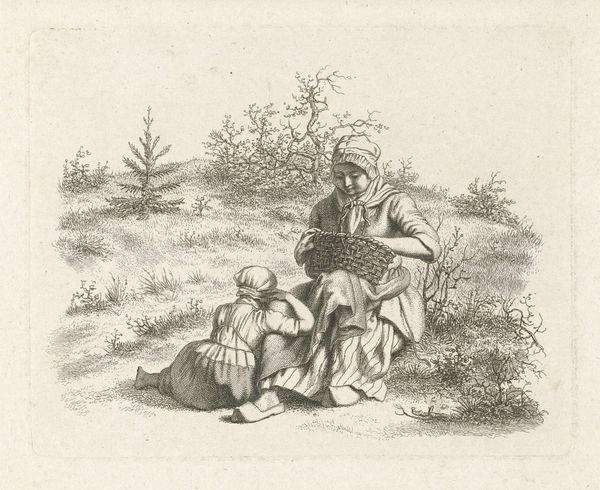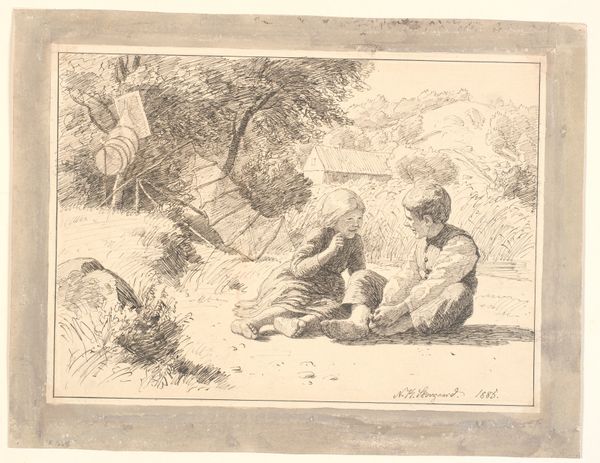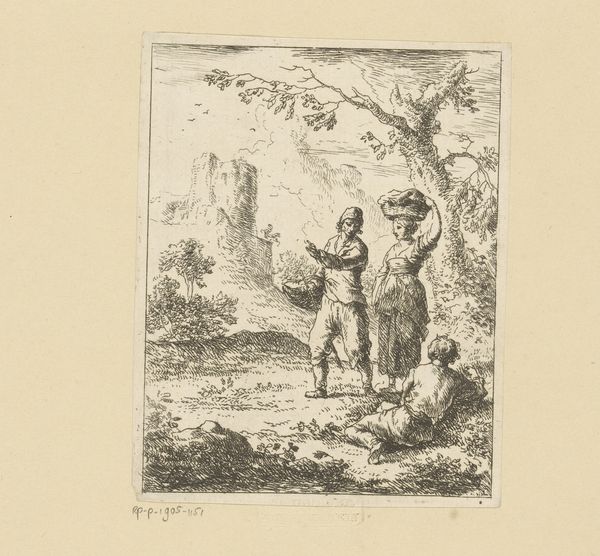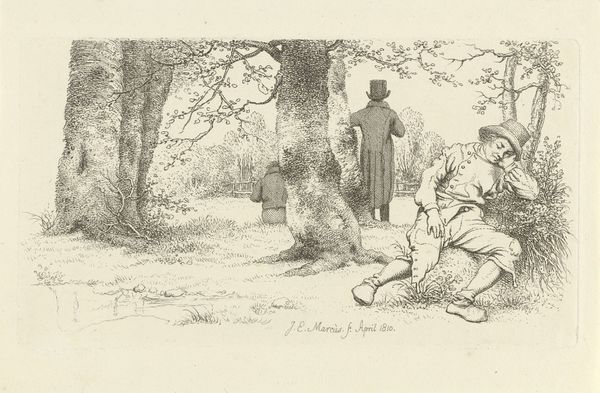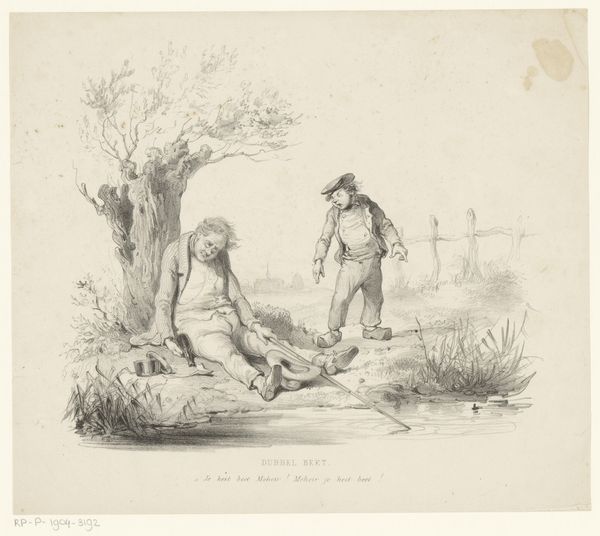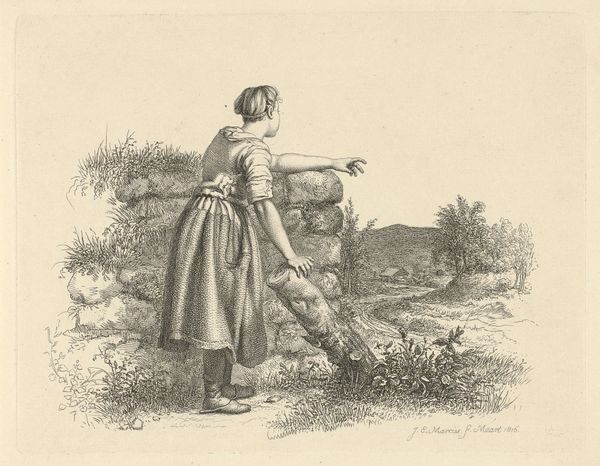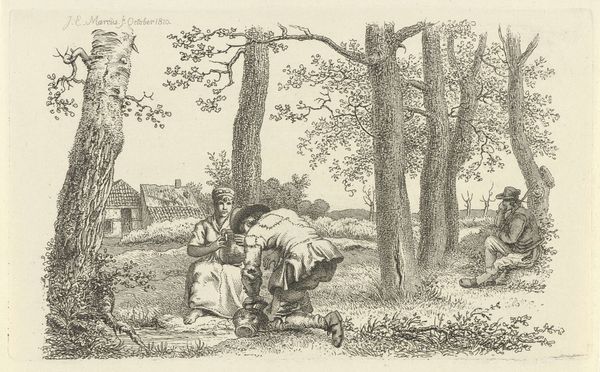
drawing, ink
#
portrait
#
drawing
#
landscape
#
figuration
#
ink
#
genre-painting
#
realism
Dimensions: height 162 mm, width 238 mm
Copyright: Rijks Museum: Open Domain
Editor: This drawing, "Zittende boer met pijp en een jongen," or "Seated farmer with pipe and a boy," made between 1811 and 1814 by Jacob Ernst Marcus, presents a scene of everyday life. It’s a detailed ink drawing; quite charming in its realism, but I wonder about the man's slightly melancholic air. What do you see in this piece? Curator: I see echoes of tradition deeply embedded in this image. The pipe, for instance, is not merely a smoking device, but a symbol, almost a character itself. Throughout centuries, tobacco, originating from the Americas, becomes integrated into society. Notice how the smoke almost blends into the surrounding vegetation, connecting the man to his environment. Consider, too, the figure of the boy; he represents the future, innocence and continuation. Where do you think that memory and innocence connect here? Editor: I see your point. Maybe it's that the boy is next to the farmer. The man is smoking and seemingly resting, maybe at the end of his working day, while the boy’s still young, his life just beginning, full of possibility. I was reading this drawing with modern eyes. I was interpreting it as this one scene from life that is melancholy, without looking deeper into the symbolisms behind this portrait. Curator: The composition certainly suggests a dialogue between generations, framed by the landscape itself. In a way, the house becomes the mind and the outside scene and open landscape become the possibilities the boy will have, as a result of all of his hard work. The landscape plays a crucial role here. Think about what that relationship must mean, for this portrait to be relevant to a new and expanding middle class. What values were upheld, by placing figures like this here, in such detail? Editor: I hadn't thought about it like that before, more like a snapshot and less as an entire cultural representation! Curator: Exactly, and so, now, we move beyond the literal image into the landscape of cultural memory. The details elevate the scene, reminding viewers about the beauty and innocence of working folk and agrarian tradition. What a pleasure it is to engage and explore those connections further!
Comments
No comments
Be the first to comment and join the conversation on the ultimate creative platform.

